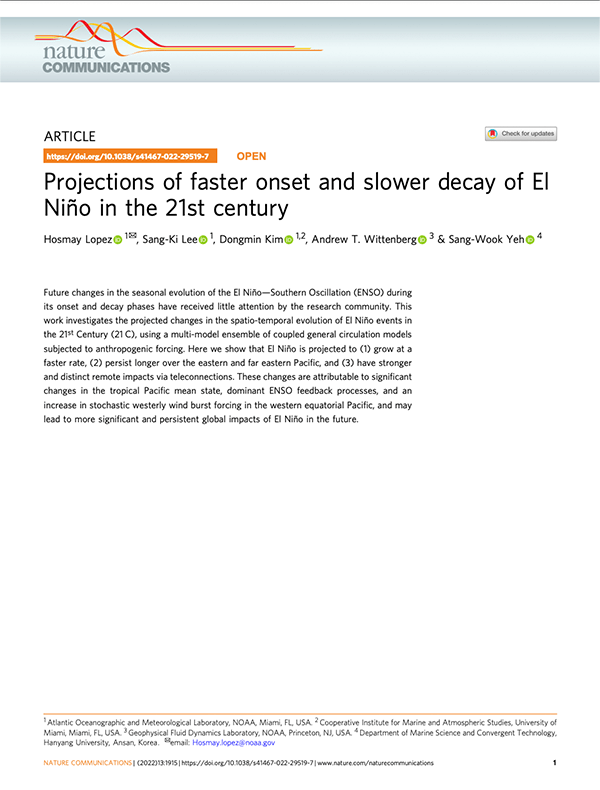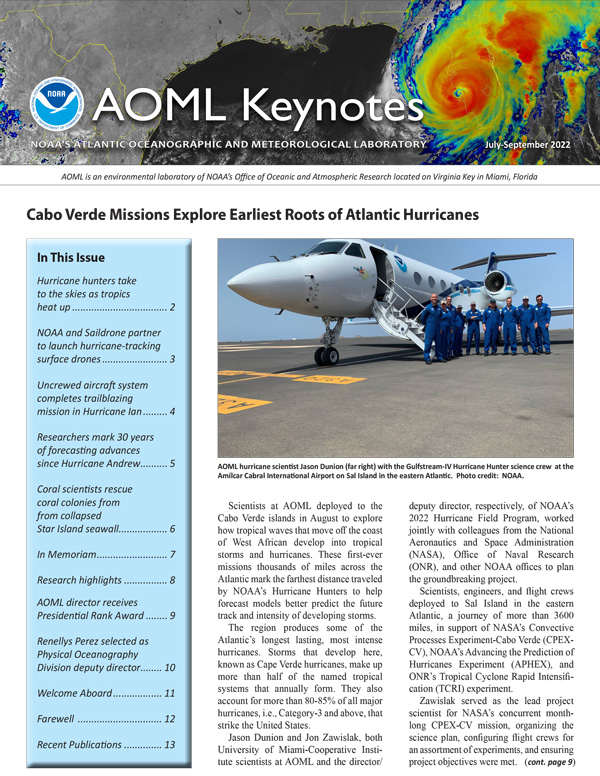Projections of faster onset and slower decay of El Niño in the 21st century
Lopez, H., Lee, S. K., Kim, D., Wittenberg, A., & Yeh, S. W. (2021). Projected Increase in Fast-Growing and Slow-Dissipating El Niño Events in the 21st Century.
Abstract: Future changes in the seasonal evolution of El Niño – Southern Oscillation (ENSO) during the onset and decay phases have received little attention by the research community. This work investigates the projected changes in the spatio-temporal evolution of El Niño events in the 21st Century (21C) using a large ensemble simulation of a couple general circulation model under anthropogenic forcing. Here we show that El Niño is projected to (1) initiate sooner in boreal spring, (2) to grow at a faster rate, (3) to persist longer over the eastern and far eastern Pacific, and (4) to have a broader impact on remote teleconnections. Significant changes in the tropical Pacific mean state, dominant feedback processes, and a projected increase in stochastic westerly wind burst forcing largely explain the fast growing and slow dissipating El Niño in the late 21C. Important implications of these findings are that the global climate impacts are projected to become more significant and persistent, owing to the extended persistence of El Niño.


